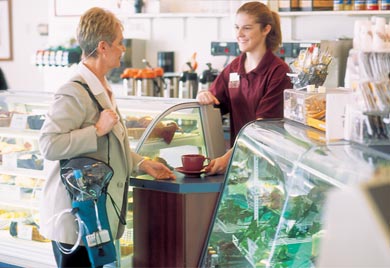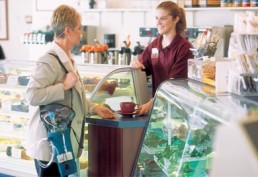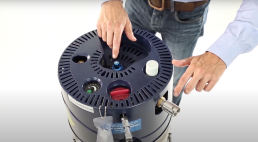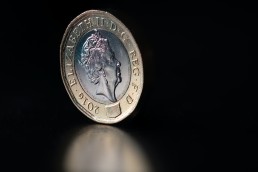Managing Christmas Stress
 Christmas can be a very stressful time for anyone – you want to buy presents for your friends and family, plan a trip, plan a family meal and a get-together, and handle the cold weather that you might be experiencing. All of this can be hard to handle for someone who is in full health, not to mention for someone who has a chronic lung condition, such as COPD, or for someone who needs to portable oxygen concentrator on a daily basis.
Christmas can be a very stressful time for anyone – you want to buy presents for your friends and family, plan a trip, plan a family meal and a get-together, and handle the cold weather that you might be experiencing. All of this can be hard to handle for someone who is in full health, not to mention for someone who has a chronic lung condition, such as COPD, or for someone who needs to portable oxygen concentrator on a daily basis.
Here are some ways you can manage your busy holiday season, so you aren’t trying to do too much at once and wearing, as well as ways to relax and just enjoy this special time of year.
Staying Calm and De-Stressing
Write down what you have to do on a calendar and space these things apart so that you have plenty of time between each event or activity. This gives you a time buffer, just in case something comes up. You won’t feel stressed out with a quickly approaching deadline.
Keep it simple with your finances. Shopping and thinking about your loved ones shouldn’t send you into a tizzy – it should be more enjoyable than stressful.
Keep your spending realistic and don’t stress out if you can’t afford to get your grandchildren or children that iPad that they want.
Have friends or family help you set up your Christmas decorations, which will save you some work and exhaustion, so you can enjoy the decorations, as well as the time spent with others. This kind of enjoyment is important to keep your stress levels down. After everything has been set up, sip some hot chocolate and watch Christmas films and enjoy the decorations. Scents are important when you are trying to relax. Natural pine scents, candles that smell like vanilla or freshly baked cookies that will help you relax.
Best places to visit this Christmas
From New Mexico to New Zealand, a world of Christmas celebrations awaits.
Whether your winter holiday trip enhances your yuletide nostalgia with traditions, sparkly lights, and nippy air or makes a radical break from it—by, say, taking you to warmer climes or a quiet, far-flung hideaway—breaking the habit of staying home will always reward you with a Christmas you’ll never forget. With that goal in mind, we’ve rounded up diverse, exceptional places to get you in the spirit of taking off.
Quebec City is one of our favorite historic destinations for the holidays. The narrow cobblestoned streets and stone architecture of the walled city, founded in 1608 by French explorer Samuel de Champlain, make it as romantic and European as it gets on this side of the pond. Add to that a proclivity for snowfall and an abundance of top-notch bars and restaurants, and you may wish the New Year could be postponed.
But the appeal of warming up over the holidays is undeniable, too. For the die-hard contrarian, Kaikoura, New Zealand, ought to do the trick. It’s the height of summer there at Christmas, a holiday most often celebrated outdoors with backyard barbecues. But it’s also a great time to be hiking the rainforest of the Kaikoura mountain range or on the waters of Kaikoura Bay, one of the most biodiverse marine environments on the planet. It’s the summer home of sperm whales, fur seals, dusky dolphins, and pilot whales, and all it takes to commune with them is a boat and a bit of perseverance.
South America has weathered the global recession better than most regions, and it’s not hard to see why. Brazil in particular is peppered with off-the-beaten-track gems that offer a true escape, like the coastal Portuguese colonial town of Paraty, about 140 miles south of Rio. Its friendly locals, cerulean waters, exceptional beaches, and exotic-bird-filled jungles may make you forget what holiday it is altogether. Like we said: unforgettable.
Read more at: Best places to spend Christmas: http://www.travelandleisure.com/articles/best-places-to-spend-christmas
A welcome addition to OxygenWorldwide's portfolio

OxygenWorldwide are very pleased to announce the welcome and launch of our new domains and countries Russia and China.
OxgenWorldwide had an increase in interest and demand for travel to the Japanese market which was succesfully targeted. OxygenWorldwide has now created a dedicated website for the Chinese and Russian markets to interest medical oxygen users who travel overseas to use its services. The team have seen a high increase in the Chinese travel market and know that here there are many people and visitors who travel with a portable concentrator (POC).
The S.O.S. Back-up service for the unfortunately event that the portable oxygen concentrators break down during their trip will be of a huge beneficial interest.

To find out more please visit our China website here: https://www.oxygenworldwide.com/en/oxygenworldwide-chinese.html
And also our Russian website here: https://www.oxygenworldwide.com/en/oxygenworldwide-russian.html
We don’t take breathing for granted.
Travelling with oxygen

Holiday and travel.
Even if you have a condition which requires oxygen therapy, you may wish to go on holiday either within the UK or abroad. We have put together some key considerations for you if you wish to go on holiday. We can help with many of the details and offer advice. Please give us as much notice of your holiday requirements, however
it is best to request as early as possible.
Going on holiday in the UK
Before you book
→ Contact your planned holiday destination to gain permission for oxygen equipment to be delivered and stored in the accommodation.
→ If you are travelling by public transport – contact the transport company and inform them you will be carrying oxygen.
Remember to advise:
1. Start and end date of your holiday
2. Full postal address and telephone number of the holiday destination.
Holidays outside the UK
(including the Channel Islands)
Before booking a holiday outside the UK it is advisable to discuss your plans with your doctor or
healthcare professional – especially if you are flying. During a flight, the high altitudes will cause the
oxygen concentration levels in the air in the cabin to fall. People without the need for supplementaryBefore you book your flight find out the following information:
→ What the airline’s policy is on oxygen. Taking oxygen on a plane can be easy and free, or
difficult and expensive. Some airlines will not allow oxygen on the plane at all, it depends on the airline. You must find out before you book a ticket. This may also affect your choice of destination or carrier.
→ The exact length of the flight, and whether delays are likely.
→ The facilities available at both airports. This includes assistance required with luggage, boarding the aircraft, wheelchair requirements and whether oxygen is available. If the holiday involves a long-haul flight, you should find out if time will be spent at a third airport for refuelling and how oxygen will be supplied there if required. With the exception of oxygen provision, these services will usually be free.
→ How you confirm your fitness to fly. Some airlines let you travel without a letter from your doctor, while others ask you to fill in a special medical form, verified either by your own GP or by the airline’s medical staff. Most ask for a fitness to fly certificate, obtained from your doctor.
Helping you to breathe at home
If you've been prescribed oxygen therapy, it's because your blood oxygen level is low. Low oxygen levels can potentially damage your heart or brain.
The main purpose of home oxygen treatment is to raise your blood oxygen to a level that prevents such harm. It also helps relieve breathlessness and other symptoms of low blood oxygen, such as ankle swelling and blue lips.
However, using oxygen just for relieving symptoms of breathlessness is not helpful and can cause long term harm by making you less fit. This can also cause a delay in finding out why you are breathless.
How home oxygen treatment can help
If you have a medical condition that leads to a low oxygen level in your blood (hypoxia), you may feel breathless and tired, particularly after walking or coughing. You may also have a build-up of fluid around your ankles (oedema) and blue lips.
Breathing air with a higher concentration of oxygen can help increase the amount of oxygen in your blood. This makes it easier to do activities that might otherwise be more difficult. It also helps reduce the symptoms mentioned above.
Oxygen therapy can help people with a range of health conditions that affect breathing or blood circulation, including:
- chronic obstructive pulmonary disease (COPD) - a long-term disease of the lungs
- severe long-term asthma
- cystic fibrosis - an inherited disease that causes the lungs to become clogged with thick, sticky mucus
- pulmonary hypertension - high pressure inside the arteries to the lungs, which causes damage to the right-hand side of the heart
- obstructive sleep apnoea - a condition that causes interrupted breathing during sleep
- diseases of the nerves and muscles or ribcage
- heart failure - when the heart struggles to pump enough blood around the body
People who have oxygen therapy have different requirements. Some people only need oxygen therapy for short periods during the day, when they're walking about (ambulatory oxygen). Others need it for longer periods and during the night.
Different types of home oxygen
Oxygen can be obtained from:
- compressed oxygen cylinders
- liquid oxygen in cylinders
- an oxygen concentrator machine, which extracts oxygen from the air
Oxygen cylinders
If you just need oxygen for short periods to relieve attacks of breathlessness after an illness, you will probably be prescribed oxygen cylinders. However, this should be reviewed after a certain time so that the short-term relief does not hide more serious underlying heart or lung conditions. If your blood oxygen levels are normal for you during a review, that short-term oxygen should be withdrawn.
You breathe the oxygen through a mask or through soft tubes in your nose, called nasal cannulae. You can talk, eat and drink while using cannulae.
Cylinders containing oxygen compressed into liquid form can contain more oxygen than standard cylinders. This type of oxygen supply will last for longer, and the tank may also be lighter.
Oxygen concentrator machine
An oxygen concentrator machine is convenient if you would benefit from having oxygen for a large number of hours a day, including while you're asleep. It ensures you have a source of oxygen that never runs out.
An oxygen concentrator is a machine, about two-and-a-half feet (75cm) high, which plugs into your electrical socket. It filters oxygen from the air in the room and delivers it through plastic tubing to a mask or nasal cannulae.
Long tubing can be fixed around the floor or skirting board of your house, with two points where you can "plug in" to the oxygen supply.
When the machine is installed, the engineer or nurse will discuss with you the length of tubing you’ll need. The machine is very quiet and compact, and the engineer will explain how to use it and will answer any questions you have.
A back-up cylinder of oxygen is also provided in case the machine breaks down. Regular maintenance visits will be made to make sure the concentrator is always working properly.
Portable (ambulatory) oxygen
If you’d like to have a small portable cylinder to take oxygen outside your home, talk to your specialist. You’ll need to be fully assessed to see whether portable oxygen (also known as ambulatory oxygen therapy) is likely to be helpful.
Portable oxygen is not recommended if you have heart failure or if you smoke.
Portable cylinders can provide oxygen at a rate of 2 litres or 4 litres a minute, or have an adjustable scale up to 4 litres a minute. The flow required is determined by your lung specialist or the oxygen service healthcare professional. When full, these cylinders weigh just over five pounds (2.3kg) and hold just under two hours of oxygen (at 2 litres a minute).
Going on holiday
If you are going on holiday in England or Wales, talk to your supplier to see if you can make arrangements to have home oxygen supplied to you at your destination. Try to give them as much notice as possible.
Before you arrange your holiday, check with your doctor that you are well enough to travel.
Safety
Oxygen is a fire hazard and, if you are supplied with home oxygen, it is important to take precautions.
For example:
-
do not let anyone smoke while you are using oxygen
-
keep away from flammable liquids while using oxygen - these include alcohol gel, cleaning fluid or aerosols
-
keep oxygen at least six feet away from flames or heat sources
-
keep oxygen cylinders upright to avoid them getting damaged
Your home oxygen supplier is also likely to let the local fire service know that there is oxygen in your home. They may request a risk assessment, even if you do not smoke.
COPD and Portable Oxygen Therapy
Many people with COPD need supplemental oxygen therapy. Unfortunately, some people who use portable oxygen are wary of traveling with oxygen. So they opt to stay at home instead of going out to see friends, shop, or enjoy a vacation.
However, oxygen therapy can really improve your physical capacity to move around and perform tasks that your advanced COPD was preventing you from performing. You might discover that using oxygen increases your freedom to go where you want to go and do what you want to do once you understand what's involved.
Use portable oxygen therapy instead
For excursions away from home, you'll need to convert to a portable oxygen delivery device if you don't already have one. Small tanks are used by portable oxygen concentrators, or POCs, to store compressed oxygen. Travel carts and carrying bags are typically included with POC tanks. These work great for travelling through airports or just for sightseeing. POCs are battery-operated. A few batteries have a five-hour lifespan. In order to be plugged in when in a car or anywhere with an electrical outlet, POCs also come with AC/DC adapters. You will be able to live a more active life with greater freedom thanks to the portable oxygen delivery system. Always have your oxygen supplier's phone number handy. Whether you're in town or not, you never know when you might run into issues with your portable oxygen supply.
Here are some more pointers for oxygen-powered travel:
Using portable oxygen for land travel
Consult your doctor beforehand. Find out if you can travel safely with COPD. Inform your physician of your intended travel itinerary. If you are travelling outside of the nation or to higher elevations, this is especially crucial.
There won't be many limits on your ability to bring oxygen when travelling by automobile or motor home. If you store your portable oxygen carefully, you can bring it in your car with you. When travelling, keep your oxygen in the car but out of the heat. As gases escape from oxygen containers, partially roll down a window. These gases are dangerous and can accumulate in small areas. The portable oxygen concentrator should never be kept in a heated car or other enclosed space. With portable oxygen, travelling by train while carrying oxygen should be safe. Once more, make sure you can carry portable oxygen on board by giving the railway line a call in advance.
Don't forget to factor in additional oxygen for the journey as well as for getting to and from your destinations.
Day trips and bringing portable oxygen to restaurants
You can visit eateries, retail centres, movie theatres, concerts, religious events and other locations even while receiving oxygen therapy. Once more, follow these safety guidelines when using portable oxygen for a successful day trip:
- Make sure you have enough oxygen in your tank before leaving your house, at least enough for the journey there and back, plus a little extra.
- Verify that your oxygen supply is operating properly.
- When you get to your destination, avoid approaching or sitting next to smokers.
- In restaurants, request that any candles be taken from your table.
Using portable oxygen while cruising
Speak with the cruise line staff before making your arrangements. Find out the ship's regulations on carrying portable oxygen. On board the ship, extra oxygen is occasionally supplied. If not, you'll need to pack extra oxygen in case you need it for the whole cruise. Ask ahead of time to be sure. When the ship arrives at each port of call, you might be able to acquire oxygen refills. Don't forget to bring the right electrical adapters for your portable oxygen apparatus.
Oxygen-related air travel
Many COPD patients require supplemental oxygen to be administered during flying. You will have to establish plans in advance in order to be able to accomplish this.
To help you have a simpler vacation, consider the following guidelines:
- When making your reservation, find out from the airline what its policies are regarding carrying portable oxygen.
- Find out which portable oxygen concentrators can be used throughout the flight that have been given the go-ahead by the Federal Aviation Administration (FAA). To bring portable oxygen on a flight, you need to get your airline to authorise the kind you use.
- Ask your oxygen supplier whether you can rent a portable oxygen concentrator that has been approved by the FAA if you don't already own the appropriate kind of container.
- Ask your oxygen supplier whether you can rent a portable oxygen concentrator that has been approved by the FAA if you don't already own the appropriate kind of container.
- To reduce anxiety about missing a connecting flight or having a layover, try to book a nonstop or direct trip.
Re-contact the airlines forty-eight hours prior to departure. Tell them you're using oxygen to travel. For certain airlines, approving the oxygen tank's use on the aircraft requires an inspection 48 hours prior to takeoff. For a price, other airlines might offer oxygen for use on board. - Find out if you require additional coverage for using oxygen during your flight by getting in touch with your insurance provider.
- Consult your doctor for a prescription for extra oxygen, and carry it with you at all times. This medication ought to confirm the necessity of in-flight oxygen and provide details on the oxygen flow rate and duration.
- Make careful to complete any documents your doctor may need to fill out ahead of time, as the airlines may have their own.
- You could require an increase in the oxygen flow rate when flying, at the discretion of your physician. Make sure you discuss this with your physician so that you can breathe comfortably at high altitudes.
- It's possible that the airlines will ask you to bring a lot of batteries to run your POC. Make sure your battery lasts for at least half as long as the entire distance you're travelling, from the moment you leave your house until you reach your destination.To start planning your travel with medical oxygen contact our team.
Putting autistic children in oxygen chambers twice a day improves their symptoms, research finds
By Fiona Macrae
Pressurised oxygen chambers, similar to those used by divers, could help treat autism, research shows.
Using a hyperbaric oxygen chamber twice a day for four weeks significantly improved the symptoms of autism in a group of five to seven year olds.
Improvements were seen in 80 per cent of those treated, with 30 per cent rated as 'very much improved' or 'much improved', the journal BMC Pediatrics reports.
Irritability and hyperactivity eased, while speech and social interaction improved in the youngsters treated in the chambers, which had higher than usual levels of oxygen.
It is unclear how the treatment works but it may be through raising oxygen levels in the brain, while suppressing inflammation and unwanted immune reactions.
The researchers, from the International Child Development Resource Centre in Florida, said the inclusion of dummy hyperbaric oxygen chambers as well as real ones made the results more reliable than those of previous studies.
They said: 'In the light of the positive results of this study and those of several previous studies, the use of hyperbaric treatment appears to be a promising treatment for children with autism.'
They added that more research was needed to determine if the effects were long-lasting or if on-going treatment would be required.
Richard Mills, of Research Autism, welcomed the research but cautioned that parents can expect to pay thousands of pounds for a course of treatment.
He said: 'Hyperbaric oxygen treatment has been known to be beneficial with children and adults with a range of neurological conditions and there's no reason to suppose some individuals with autism won't show some benefit.
'But it is not clear cut and parents should be aware of the costs and of the dangers.'
Side-effects include fits, short-sightedness and claustrophobia.
Moon could become the world's 'service station' thanks to abundance of oxygen and hydrogen
By Daily Mail Reporter
UPDATED: 16:09 GMT, 28 September 2009
The discovery of water on the moon could pave the way for us to build a rocket refueling station up there.
For man to be able to make sustainable, affordable voyages in the solar system, we need a way to re-fuel off the planet.
Now, with the discovery of hydrogen and oxygen molecules - the components of water - on our neighbouring body, we may now have a staging post to explore the other planets.
A ship taking off from the Earth expends so much fuel escaping the planet's gravitational fuel that there is little to spare for inter-planetary exploration.
But a staging post on the moon could allow a ship to re-fuel with relative ease, and could help speed up the exploration of other planets, such as Mars, where water has also been detected within the last few weeks.
The discovery of water on the moon was made by the Indian lunar mission Chandrayaan-1.
Scientists were looking for a signature of water in the craters near the poles, but were surprised to find evidence of water on the sunlit areas of the Moon instead.
Experts believe the water is trapped in the Moon's surface dirt and in theory can be extracted in large quantities to support life.
Professor Larry Taylor, a planetary scientist at the University of Tennessee and co-author of the research, said: 'Space ships use up to 85 per cent of their fuel getting to the moon - but this [water] will allow the moon to be a gas station in the sky.
'This means missions will be able to load up on hydrogen and oxygen and the moon can act as a stepping stone to other planets such as Mars.'
He said that solar-powered babes could become 'commercially viable', although still a costly process.
American researchers are now figuring out ways of extracting water from the moon, such as using sifting tools to extract metal oxide particles, which can then be heated to produce oxygen, which can then be combined with equally-plentiful hydrogen particles to make water.
Elderly woman who uses an oxygen tank is charged with drug trafficking at her New Mexico apartment
- 84-year-old tried to hide stash of cocaine in raid, police say
- Neighbors say she let son sell drugs so he could care for her
By Daily Mail Reporter
PUBLISHED: 19:58 GMT, 23 May 2013 | UPDATED: 13:51 GMT, 24 May 2013
She may not look like a typical drug dealer, but this 84-year-old woman who uses an oxygen tank has just been charged with drug trafficking and possession.
Lillie Smith is also charged with tampering with evidence after she tried to hide cocaine and marijuana that she had on her when police raided her Albuquerque apartment.
'It's definitely not something you see everyday,' Sgt Aaron Williamson, of Bernalillo County Sheriff's Office, said.
The charges relate to a warrant served at Smith's apartment in 2011, when her son, Nathan Jones, was living with her.
Officers believed that her son was dealing drugs from their home.
'There were scales, money, narcotics things of that nature that we generally find with drug trafficking,' Sgt Williamson said.
Smith's neighbors described the elderly woman as kind to a fault, and told KRQE she had allowed her son to deal drugs from her home because she wanted someone to take care of her.
However, police believe she was involved in the illegal operation and say she had cocaine and marijuana on her when they searched her home.
More...
'When detectives were on scene she did try to take the narcotics that were on her person out and stash them,' Sgt Williamson said.
Jones was arrested on drug charges but because of her medical condition, his mother avoided being charged - until now.
A district attorney's office filed charges against the elderly woman, and a grand jury returned an indictment in February.
After her arrest in April she was bonded out of jail and is due to make her next court appearance in July.
Previous court records show Smith pleaded guilty to drug charges in the 1990s, when she was in her 60s.
Smith is not the first pensioner to be arrested for drug dealing, but she may be the oldest. In April last year 73-year-old Darlene May was arrested in Oklahoma. She faces drug charges after police found 4lb of marijuana and $276,000 in cash at the home she shared with her son.
Follow us: @MailOnline on Twitter | DailyMail on Facebook
Would you pay for oxygen?
It has been made hip by countless celebrities but will we Brits really be rushing to the nearest store to pay for the latest fad to hit the streets - a machine that dispenses oxygen.
It isn't as silly as it sounds. Did we ever think we'd end up paying for bottled water? Who could have imagined that millions of us would ever pay for water rather than drinking it free from the tap!
We need oxygen to breath and it's free in the atmosphere so why pay £2 for a 10 minute shot?
Well oxygen therapy has been researched extensively and the benefits are scientifically proven.
A recent study reported that feeding the brain with extra oxygen can improve mental performance.
Brain power can be increased by up to 20 per cent when people take extra supplies of oxygen, according to researchers at the Human Cognitive Neuroscience Unit of the University of Northumbria.
Volunteers remembered up to 20 per cent more words from a list after they were given a short blast of oxygen through a facemask.
A dose of oxygen also improved performance when playing the computer game Tetris when the game was at its hardest level.
Experts believe that the more oxygen in the body and brain the better your system will function.
Some of the benefits are it: boosts energy, enables recovery more quickly after exertion, gets rid of headaches and hangovers, relieves stress, increases concentration and enables you to feel more relaxed and revitalised.
Oxygen bars have been around for years in Asia and America. Cheers and Natural Born Killers star Woody Harrelson who's also a hemp impresario and Hollywood's man with a social conscience, opened an oxygen bar in LA where hip customers sniff medical grade oxygen to relieve stress and get rid of their hangovers.
Athletes take oxygen before competing, and so do rock stars such as Mick Jagger. Michael Jackson also purportedly favours napping in his personal oxygen chamber.
Now Britain's airheads can inhale extra oxygen from machines installed at night-clubs, bars, gyms and high street stores such as Selfridges and Harvey Nichols which launches an oxygen bar later this month. Oxygen machines will also be available to rent for the office or home.
The specially designed machines supplied by O2Live are simple to use. You put a pre-purchased card into apparatus and oxygen is pumped out via a jetmask, which covers the nose and mouth.
Alternatively you can chat with friends if you opt to use a live wire which is a plastic tubing which pumps oxygen just up the nose.
A minimum of five minutes is needed to start to feel benefits. Three 20 minute sessions per day is the maximum recommended.
Dominic Simler, is Managing Director of O2Live, which patented the oxygen machine, now available at 260 sites across the UK.
He believes that tens of thousands of people are already enjoying the benefits of an extra oxygen boost.
He said: 'Of course with anything that is new or a bit odd or crazy people are going to pass it off as a fad which only celebrities can afford.
'But the same could be said about buying bottled water. If you had asked the same question of people 20 to 30 years ago about would they pay 70p for a bottle of water when it is free out of the tap? They would have said no but now bottled water is brought by millions of people.
'It's essentially a lifestyle choice just as it is with drinking bottled water which you perceive to be purer and healthier.
'There is a hell of a lot of animosity from people to start with but they are eager to try it and once they do they invariably like it and feel the benefits.'
How extra oxygen works?
Oxygen is at saturation level in the red blood cells even when breathing normal air. Extra oxygen is absorbed into the blood by increasing it partial pressure, driving more oxygen into the tissues.
The O2LIVE oxygen system plugs into a normal wall socket and uses minimal electricity.
It works by drawing in air which contains 21 per cent oxygen, 78 per cent nitrogen and one per cent other gases, filtering out the impurities through molecular sieve beds and pumping out up to 95 per cent pure filtered oxygen.
The user breathes an entirely safe mixture of 95 per cent pure oxygen and the surrounding air, which contains 21 per cent oxygen. This means they get between 50 to 100 per cent more oxygen than they would get from the normal sea level air.
A fragrance can be added to enhance the pleasure of breathing a scented, oxygen enriched air mixture.
The aromatherapy scent cartridges include: energy, eucalyptus, passion, relax, lemon and orange.
The system uses an oxygen generator to produce the oxygen because of the advantages it has over cylinders, which have been used in oxygen bars.
Cylinders have to be regularly refilled, have an additional fire risk and have limited oxygen capacity within the cylinder. The length of time you stay on the O2Live depends on you and the benefits you are looking for.
My own verdict on this new phenomenen having had a 10-minute shot of oxygen from the O2Live was that it was refreshing and did make me feel relaxed. I enjoyed the eucalyptus scented cartridge but I couldn't say I felt any long lasting benefits from my 02 blast but I would definitely try it again.
For more information about O2Live contact 020 7431 8585.
Read more: http://www.dailymail.co.uk/health/article-37935/Would-pay-oxygen.html#ixzz2f8Zqjs9x
Follow us: @MailOnline on Twitter | DailyMail on Facebook














